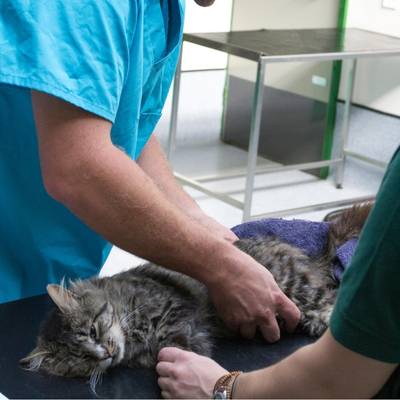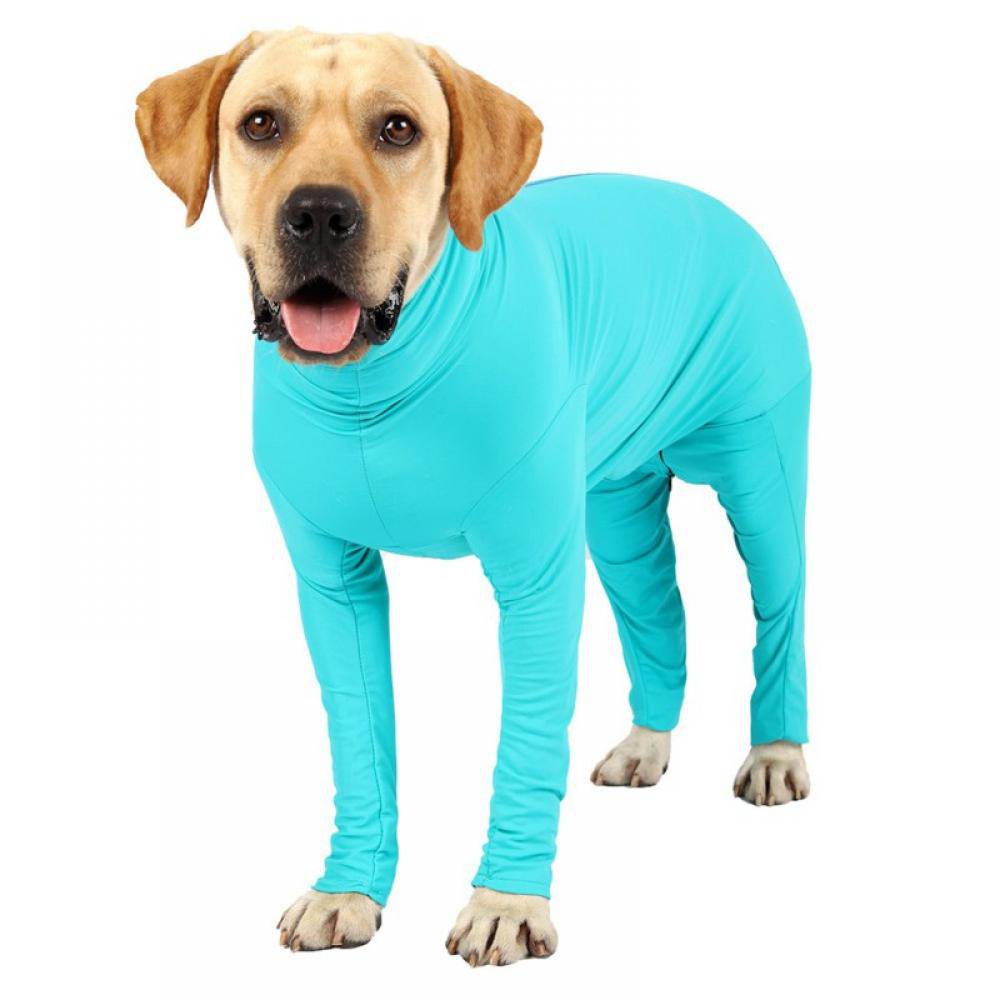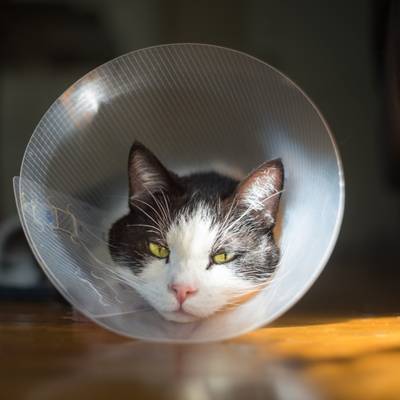
Pet Fall Allergies – What To Do
Hi everyone, welcome to this episode of Val Talk’s Pets. So, we are now moving into fall, and I have had a lot of pet parents asking about things they […]
 play_arrow
play_arrowHow to Choose the Perfect Name for Your Pet Val Cairney

 play_arrow
play_arrowPost-Surgery – Helping Our Pets Through It Val Cairney

Hi everyone and welcome to this episode of Val Talk’s Pets. In this episode I thought we would explore what to do after our pet has had surgery or a wound. Sometimes our pets have routine procedures like spaying or neutering and sometimes they end up with some very serious surgeries or boo boo’s. I find that pet parents are often looking for solutions to help their pets feel more comfortable after surgery and also to protect surgical sites from licking or biting. So, let’s explore what to do when our pets have had surgery or have a wound.
I think surgery overall as we know, be it a simple surgery or a more lifesaving surgery, is very stressful, not just on the pets but on the pet parents as well. When our pet goes into surgery, we hover over our phones and count the minutes until we are told that our pet is fine and is in recovery. So, what can we do for ourselves? I had a conversation with Dr. Rob Hillerby from Caledon Mountain Vet Hospital, and he said that it is really important to make sure that the pet parent has as much information as possible and to answer all the questions a pet parent may have. This way not only can the pet parent make an informed decision about surgery but also to feel that they have the peace of mind knowing what exactly is going to happen and what to expect after surgery. Good veterinarians will always take the time to explain everything to a pet parent and follow up with after care. No question is stupid, so if you are in a position where your pet needs surgery, always ask whatever is on your mind. Having a good understanding of what the pet will be going through can help with some of the anxiety while waiting for the pet to come out of surgery.

The other thing to know is what exactly will be the pet’s capability after surgery? Will you need to restrict their movement? Will they need help going outside or will they not be able to go outside and will you then need indoor pee pads for example. Will you need to set up a very comfortable bed or keep them continuously warm? Basically, what do you need to do to prepare your home for a pet coming home post-surgery? If you need special food or medication, it’s imperative you know what to do and you should feel very comfortable calling into the clinic to clarify anything with medications etc. The best thing to do is be prepared. This will reduce the stress and hopefully, this calmness will be felt by your pet reassuring them.
The next thing to prepare for is whether the pet will need a recovery cone. So, these cones are un-affectionately called cones of shame. This probably originates from the horrible shameful and sad faces most pets have when they have to wear a recovery cone. The cones are actually called E collars or Elizabethan collars. They come in all different sizes and are designed to prevent a dog or cat from scratching or licking a surgical site. So, here’s the thing, these really only work when you are dealing with a surgical site that is behind the shoulders and even then, some dogs and cats are very dexterous and can get around the cone. For this reason, some dogs end up wearing an enormous cone because they can get around it to lick the area.

Cones are cumbersome and unforgiving. A dog running through the house with a cone on can cause some serious damage as things go flying. They can be very uncomfortable around the neck and almost impossible for a dog or cat to get a drink of water or eat. Cats in particular are usually quite intolerant of an e collar. And if the injury or surgical site is on a paw, well they can pretty much get to that, collar or not. So, what is the alternative? There are some recovery collars or cones that are a bit more forgiving. These cones have a softer panel of nylon, alternating with a panel of plastic to keep the cone more rigid. There is some play with the movement of these collars and can be very useful to keep a pet away from a spay site or neuter site. But, again, some pets can definitely get around the collar regardless. There are also blow-up collars. These collars are round and adjustable and sized, and you blow up the collar like a tire. They are a lot more comfortable for a pet, but a pet parent will often find that they need a fairly large blow-up collar to prevent the pet from getting to a surgical or wound site that is behind the shoulders.

The next alternative is the recovery snuggies or p.j.’s. I love this idea especially for spays. So, there are different types of recovery pj’s. Some look almost like a hospital gown where the back has ribbons to tie. So, the gown has fitted leg cuffs and covers the entire belly and snaps around the bottom. If you can imagine a dog sweater that fits all the way down the belly and has a flap that goes between their back legs and snaps over the tail, then you can picture these garments. Other recovery snuggies are stretchy and snug fitting and all one piece. There is a spot for the tail to come out, but the entire bottom is covered. This means there is no way the pet can get to a spay or neuter site or any other wound down through the belly or back end. If there is a wound or area on the upper body or upper legs, these snuggies will deal with that as well. The only thing it can’t cover is the lower half of the legs and the paws. As for going to the bathroom, the flap on the back end would have to be undone so the pet can go. That is a bit of a drawback when it comes to cats, because they just visit their litters when they feel like it so a pet parent would have to figure out a system to undo the snuggie to put them into the litter.

Now, I have had pet parents look into a cone for a dog that has been neutered. So, this I think will be a judgment call and a quick discussion with the vet. A neuter is a very simple surgery and depending on the size of the pet, may have only a few stitches. Do you really need a cone? Many dogs and cats that have been neutered don’t even notice and carry on like nothing has happened. When the incision starts to heal that is when some itching can occur and this is when the licking may start. If so, I would go with an anti-itch gel or ointment that is safe to be licked and see if that helps before going the cone route. Females that have been spayed again may experience discomfort when the incision starts to heal and if they are really worrying at the site, then one of the mentioned recovery pieces will be needed. But, trying an anti-itch gel or ointment may do the trick. When surgery is a much more intense or invasive surgery then protecting the area is very important. This is when trying everything is needed. Anti-itch gel or ointment and a cone or recovery suit may be necessary. And the other thing is to try some natural calming products like Rescue Remedy to help the pet get through the tough part.

The most difficult wounds to deal with are on the paws. If a dog cuts its paw pad or rips a nail off this can be one of the most frustrating injuries or surgical areas to deal with. Tundra had a spot on the side of his leg near his paw and he kept licking it making it worse and bigger. So, I’m pretty experienced bandaging paws or hooves for that matter and I thought I had the wound treated and well dressed. The look on his face was priceless with that, “why did you do this to me” look? I left the room for less than five minutes and when I came back the bandage was in shreds on his bed and he was on the couch with a total look of satisfaction on his face. I thought, well, you are not winning this one and I repeated the bandage full on with duct tape and the same thing happened. So, as I said, a very difficult area to deal with. And sometimes there is absolutely no alternative but to have a bandage on a paw. So, using bitter spray on the bandage can be tried, cayenne pepper, you just have to get creative, but be prepared, because some dogs will do anything to get a paw bandage off.
So, the bottom line on recovery equipment is that they can be a bit of a pain but you may have no choice. I like the recovery snuggies especially for any belly surgeries and I would exhaust all my options before resorting to an e cone or collar.
Now, when it is time to pick up your pet after surgery, one thing is to prepare yourself for the shock of seeing your pet shaved and with stitches. This can be quite shocking at first. Most veterinary stitching is done to do the job, not to be pretty. And seeing our pet’s skin without hair or fur can be quite an eye opener the first time. So, I say prepare for that. A pet coming home from surgery may be quite tired and need a nice soft, comfy warm place to have a really good sleep so as I said, prepare a nice bed.
Also, the pet may be quite thirsty after being held back from drinking water before surgery and from the anesthetic. They also may not want to eat right away. If the pet was intubated, then their throat may be sore so maybe the next day will be a day for something to eat. But all pets are different, and some will just bounce back like nothing has happened, while some will need a bit more TLC. So, when picking up the pet after surgery, make sure you have whatever you need to get your dog into the vehicle or a carrier that has a comfy soft blanket in it. You should be able to speak to the vet to get all the information and to go over medication and recovery protocol.
I’ll tell you a little story here.

A long time ago when I moved to where I live now, I went to a new vet clinic with my Rottie. I should have known this was not going to go well when we were shown into an exam room and the vet entered through another door, stopped in his tracks and said, “oh no, not a Rottweiler”! I should have told him to forget it right then and there and left, but my dog had a growth on his eye, and I was worried about it, as it was really bothering him. His eye was weeping, and he was constantly rubbing it. Anyway, the vet got over himself and had a look at his eye and determined the growth needed to be surgically removed. So, I made the appointment for the surgery, took him in and waited to hear from the clinic. They called me just after lunch and told me to come and get him. I got the low down on aftercare and an animal assistant went and got him for me.
Well, this dog was far from out of anesthetic and could barely walk. I asked what was wrong with him and they said oh he’s just having some trouble recovering from the anesthetic. I wondered then why is he being released? Shouldn’t you be monitoring him? Well, I thought never mind, I’ll pay this bill, get out of here and never come back. So, I had to walk this poor guy to the car, basically straddling him to to prevent him from falling over. Then when we got to my vehicle, which was an SUV, I could barely get him in because he weighed about 92 lbs and he had absolutely no ability to jump or lift his back legs. When I got home, trying to get him out of the truck without him face planting on the ground was a trick as was guiding him up to the house. I eventually got him into the house and settled him in a bunch of blankets and let him sleep off the anesthetic. I should have called that clinic back and given them a real piece of my mind, but I didn’t. After that, I have always advocated for my animals and trusted my instincts. With age comes wisdom and now I would never let a situation like that repeat itself.
So, I tell this story so that everyone can see how important it is that we do advocate for our animals because they cannot speak for themselves and have to rely upon us to make the best decisions for them. The best thing we can do when they have to have surgery is to be really prepared. We need to know what is going to happen, what to expect when the surgery is done and to prepare everything we are going to need. A lot of people come in looking for cones or ointments and their pet is actually at the vet at that moment in surgery. And they have no idea what size of cone to get and of course measuring at that point is not going to happen. I don’t know, but I think being a bit more prepared than that is needed. I think knowing you have everything you will need at the initial stage post-surgery will give a sense of calm and this is what the pet needs to feel. Either way, it is still stressful for pet parents and the pets when surgery is happening, so I recommend that all questions be asked, preparation be done and make sure that you feel comfortable that you know what is going to happen because as I say, knowing is caring.

Tagged as: e-collars, pet surgery, pet wound, caledon mountan vet, snuggies.
Hi everyone, and welcome to Val Talk’s Pets, the forum for pet parents and enthusiasts alike. So, I have been working in the pet industry now for almost 10 years and, on a daily basis, I handle a lot of issues and questions arising from pet parents. I am not a veterinarian but I do have certifications in Canine, Feline, Small Animal, Fish and Herptile and Avian Health and Nutrition from the University of California, Davis Extension, the Vet College.

Val Cairney September 30, 2022
Hi everyone, welcome to this episode of Val Talk’s Pets. So, we are now moving into fall, and I have had a lot of pet parents asking about things they […]

Val Cairney August 1, 2025

Val Cairney July 18, 2025
For the price of a coffee, or more if you are feeling generous, you can help keep this podcast going & growing. Please visit my ko-fi page to make a donation. Thanks!
all rights reserved - Val Talks Pets - 2024